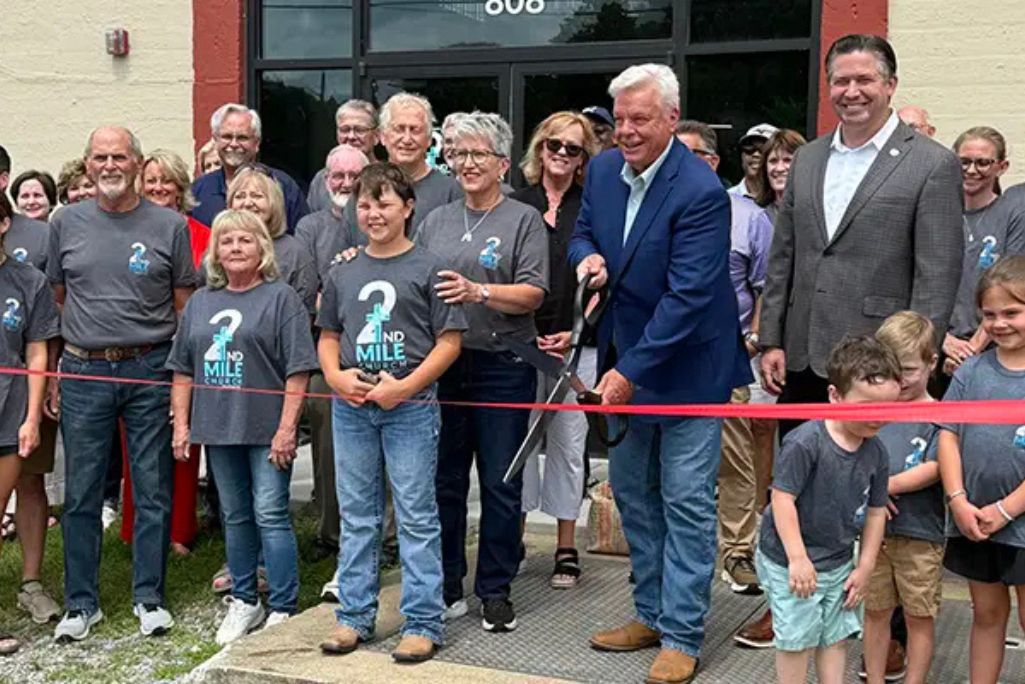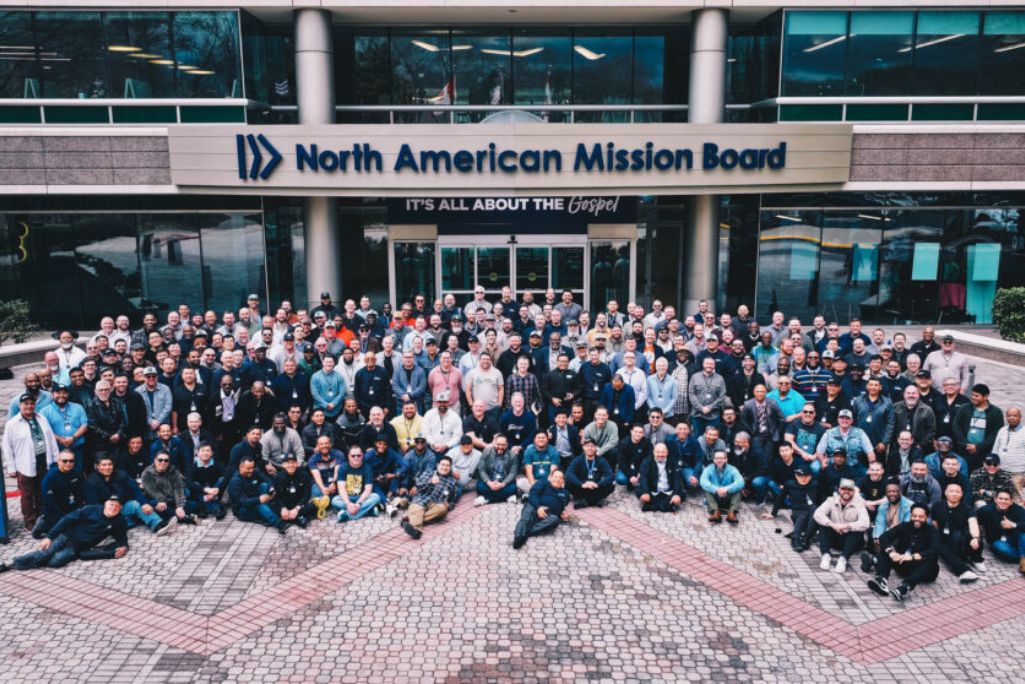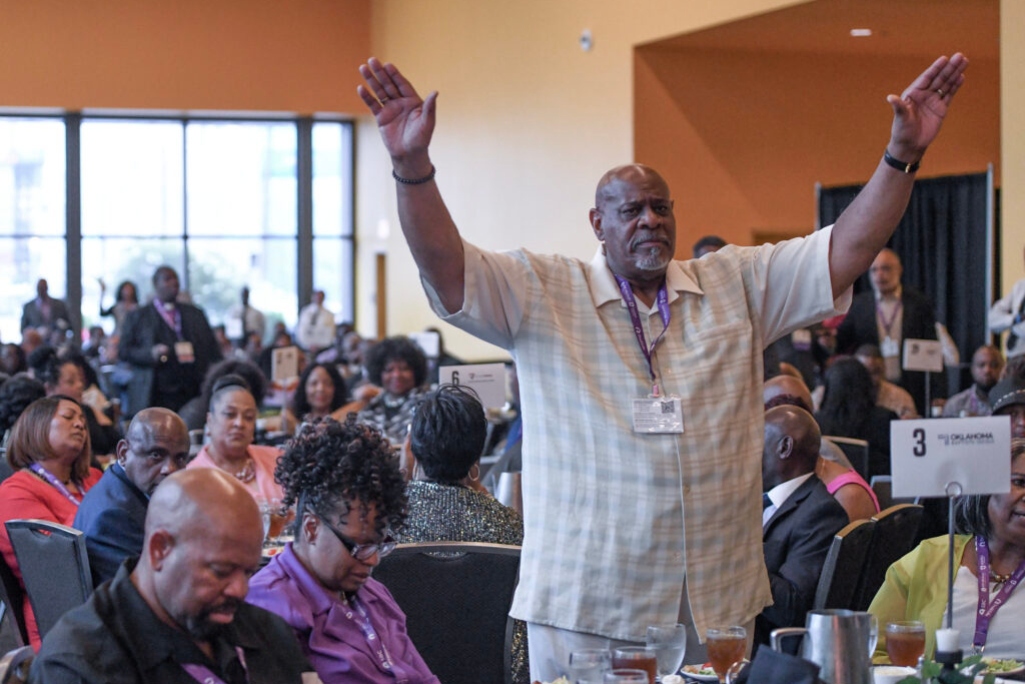
Cal Hampton, pastor of 2nd Mile Church Clarksville, cuts the ribbon on the church’s new “His Works” facility that was originally the city’s waterworks building. Now fully refurbished, the building will serve the growing church with ministry space for children, youth and collegiate students.
CLARKSVILLE, Tenn. — Cal Hampton was 60 years old and thought he might be losing his mind. The longtime pastor, firmly rooted in a beloved ministry in Wayne County, Tenn., felt God calling him to leave, relocate and plant a church.
At 60? Isn’t church planting for the young and energetic? Hampton and his wife, Diana, are undeniably energetic, their enthusiasm for serving the Lord matched by a passion for ministering to others.
But still, planting a church?
Hampton sought counsel from Randy C. Davis, president and executive director of the Tennessee Baptist Mission Board.
“It was easy to encourage Cal to make this kingdom-advancing decision,” Davis said. “It was a bold move, but I knew Cal had years of experience and a clear burden to reach his hometown of Clarksville for Christ.”
The Hamptons moved, with Cal first serving briefly as associate pastor at First Baptist Church, Clarksville, his home church. Seven years ago, they launched 2nd Mile Church. Despite a setback in 2020 due to the COVID-19 pandemic, the church rebounded and now approaches 300 in weekly attendance.
On June 30, 2nd Mile Church celebrated a milestone, cutting the ribbon on a new facility to house children, youth, collegiate and young adult ministries.
“We were out of space,” Hampton said. “We had nowhere for our children and youth, but I didn’t want to spend millions on property and buildings. I’m 69. I’ll preach until I die, but I won’t be a pastor forever. I didn’t want our church burdened with debt for years.”
The church, named for Matthew 5:41, occupies the former Clarksville Event Center, with downtown just across the street. They found the solution to their space issue was next door.
The original Clarksville waterworks facility, built in 1901, sat dormant for years. City leaders, aiming to reduce surplus city-owned properties, sold the building, previously used as a nightclub and restaurant, among other things. The church now calls it “His Works.”
“Gordon and Sandra Seay, faithful church members, purchased the building and allow us to use it,” Hampton said. “The church funded the renovation, but the Seays’ gift is a blessing to us all.
“We initially looked for a location near the interstate, but it was too expensive. The event center was available, and we moved in. Over 45,000 cars pass our church daily. This is where we want to be, and His Works enables us to expand our ministry here.”
Hampton said being near downtown, amid Clarksville’s economic renewal, has strategically positioned 2nd Mile for community engagement.
“I believe the church exists for the community, not the other way around,” he said. “You have to be out in the community, especially when planting a church. If you’re not willing to do that, you might as well stay home. We’re involved in local ministries and civic organizations.”
Hampton credited the church’s growth to members’ faithful service, a cornerstone of a successful church plant. “From the start, we’ve focused on reaching people for Christ and teaching them to follow,” he said. “Evangelism and discipleship. We have a fantastic group of volunteers who love serving others and our community.”
Lewis McMullen, who leads the Tennessee Baptist Mission Board’s church planting efforts through its Multiplying Healthy Churches initiative, called 2nd Mile a church-planting success story.
“No doubt, 2nd Mile is a healthy church,” McMullen said. “They’ve replanted and planted a church. Community-focused church planting is in their DNA. They have a kingdom focus to reproduce more churches.”
Reflecting, Hampton no longer sees the move to Clarksville as crazy. “God wanted us to plant this church,” he said. “Looking back, I’d do a few things differently, but I’m excited about where we are and where we’re heading. Great days are ahead.”
(EDITOR’S NOTE — This article originally appeared in the Baptist and Reflector.)


